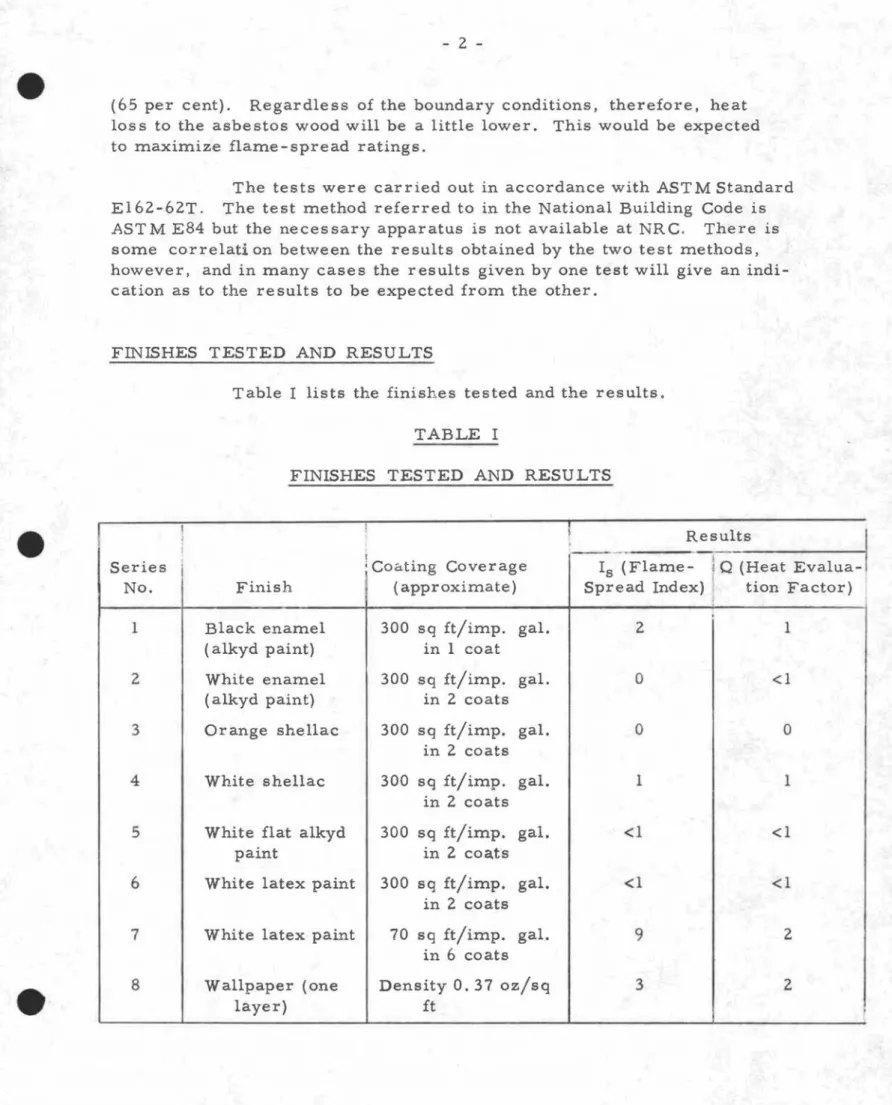Publisher’s version / Version de l'éditeur:
Technical Note (National Research Council of Canada. Division of Building Research), 1964-02-01
READ THESE TERMS AND CONDITIONS CAREFULLY BEFORE USING THIS WEBSITE.
https://nrc-publications.canada.ca/eng/copyright
Vous avez des questions? Nous pouvons vous aider. Pour communiquer directement avec un auteur, consultez la première page de la revue dans laquelle son article a été publié afin de trouver ses coordonnées. Si vous n’arrivez pas à les repérer, communiquez avec nous à PublicationsArchive-ArchivesPublications@nrc-cnrc.gc.ca.
Questions? Contact the NRC Publications Archive team at
PublicationsArchive-ArchivesPublications@nrc-cnrc.gc.ca. If you wish to email the authors directly, please see the first page of the publication for their contact information.
NRC Publications Archive
Archives des publications du CNRC
For the publisher’s version, please access the DOI link below./ Pour consulter la version de l’éditeur, utilisez le lien DOI ci-dessous.
https://doi.org/10.4224/20358614
Access and use of this website and the material on it are subject to the Terms and Conditions set forth at
Flame Spread Properties of Various Finishes on Asbestos Wood
(Preliminary Report)
Fitzsimons, R. H.; McGuire, J. H.
https://publications-cnrc.canada.ca/fra/droits
L’accès à ce site Web et l’utilisation de son contenu sont assujettis aux conditions présentées dans le site LISEZ CES CONDITIONS ATTENTIVEMENT AVANT D’UTILISER CE SITE WEB.
NRC Publications Record / Notice d'Archives des publications de CNRC: https://nrc-publications.canada.ca/eng/view/object/?id=f1c9d128-1845-49b6-8797-6bbe6954b7e7 https://publications-cnrc.canada.ca/fra/voir/objet/?id=f1c9d128-1845-49b6-8797-6bbe6954b7e7
DIVISION OF BUILDING RESEARCH
NATIONAL RESEARCH COUNCIL OF CANADA
'f
E
C
1HIN ][
CAlL
NOTlE
/PI-No.
413
PREPARED BY R. H. Fitzsimons andCHECKED BY G. W. S.
J. H. McGuire
PREPARED FOR Record purposes
APPROVED BY N. B. H.
セ February 1964
SUBJECT FLAME SPREAD PROPERTIES OF VARIOUS FINISHES ON
ASBESTOS WOOD (preliminary report)
Until recently there has been a statement in the National
Building Code of Canada with regard to the flame- spread ratings of building finish materials that the effect of surface finishes 1/28 in. thick should be disregarded. This statement has now been deleted and as a consequence information on the performance of a number of finishes, such as paint and wallpaper, is required.
The most urgent need is for information on the effect of various finishes on "noncombustible" wall linings. In certain locations, such as escape routes, it is most desirable that flame-spread ratings should be lower than 25; a wall lining sUch as plaster meets this requirement quite comfortably. It is obviously essential, to conform with the intent of the
Code, that any finish applied to a wall should not raise the ヲャ。ュ・セウーイ・。、 rating above the specified limit.
The results given here are by no means comprehensive and, in fact, this is an interim note is sued with the object of making available, as
soon as possible, the results which have accrued to date.
TEST PROCEDURE
With a view to expediting the test, i-in. asbestos wood (density O. 86 gmlee) was used as the backing material instead of plaster. The thermal conductivity of asbestos wood approximates closely to that of a conventional plaster, while the thermal capacity per unit volume is lower
2
-(65 per cent). Regardless of the boundary conditions, therefore, heat loss to the asbestos wood will be a little lower. This would be expected to maximize flame-spread ratings.
The tests were carried out in accordance with ASTM Standard E162-62T. The test method referred to in the National Building Code is ASTM E84 but the necessary apparatus is not available at NRC. There is some correlati on between the results obtained by the two test methods, however, and in many cases the results given by one test will give an indi-cation as to the results to be expected from the other.
FINISHES TESTED AND RESULTS
Table I lists the finishes tested and the results. TABLE I
FINISHES TESTED AND RESULTS
Results
I
Is (Flame - Q (Heat Evalua-Spread Index) tion Factor)I
I iCoating Coverage (approximate) Finish Series No. 1 Black enamel (alkyd paint) 300 sq ft/imp. gal. in 1 coat 2 1 2 White enamel (alkyd paint) 300 sq ft/imp. gal. in 2 coatso
<13 Orange shellac 300 sq ft/imp. gal. in 2 coats
o
o
4 White shellac 300 sq ft/imp. gal. in 2 coats
1 1
5 6
White flat alkyd paint
White latex paint
300 sq ft/imp. gal. in 2 coats 300 sq it/imp. gal. in 2 coats <1 <1 <1 <1
7 White latex paint 70 sq it/imp. gal. in 6 coats 9 2 8 Wallpaper (one layer) Density 0.37 oz/sq
it
3 23
-CONCLUSIONS
The finishes listed may be regarded as having a negligibly low flame spread when applied to plaster. It is also probable that the redecoration of plaster walls without removing the previous finish does not introduce substantial hazard, although further work is called for to determine the limits to which this statement can apply.
